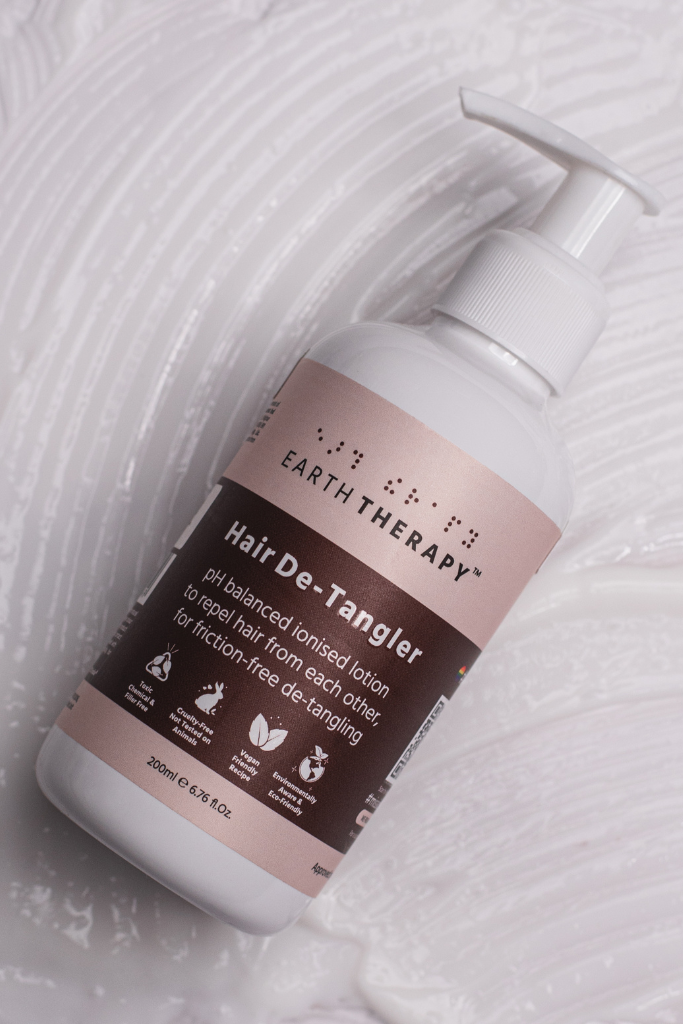Live Free, Live #United
Focus Problems: Hair Fall, Hair Thinning, & Hair Growth.
Hair Explained Like Never Before
The Solution, our range is designed to remedy the leading causes of Hair Damage & Hair Loss.
14+
Years of experience
20+
Essential Actives
KNOWN CAUSES:
According to the American Academy of Dermatology
What’s causing your hair loss can determine whether your hair, falls out gradually or abruptly, thins, can it regrow on its own? or does it require treatment to regrow? and does it need immediate care to prevent permanent hair loss
Knowledge, Applied!
Let us Discuss the causes and explore the possibility of re-growth
Try pH Balanced & Dermatologically Tested Products
Hair De-Tangler – Mineral Oil-Free, Silicon-Free, Paraben-Free & Natural Fragrance – 200ml
₹790.00 Incl. of all taxesAnti-Frizz & Texture Enhancing Hair Serum with Hyaluronic Acid – Mineral Oil-Free & Natural Fragrance – 100ml
₹690.00 Incl. of all taxesAnti-Blonde Under-Tones Conditioner – Mineral Oil-Free, Paraben-Free, & Natural Aroma – 200ml
₹890.00 Incl. of all taxesAnti-Dandruff Therapy Conditioner – Mineral Oil-Free, Paraben-Free, & Natural Aroma – 200ml
₹790.00 Incl. of all taxesAnti-Hair Fall Therapy Conditioner – Mineral Oil-Free, Paraben-Free, & Natural Aroma – 200ml
₹690.00 Incl. of all taxesAnti-Dandruff Hair Tonic – Mineral Oil-Free, Silicon-Free, Paraben-Free & Natural Fragrance – 100ml
₹790.00 Incl. of all taxesAnti-Blonde Under-Tones Co-Wash Blue Shampoo – Mineral Oil-Free, Sulphate-Free, & Ammonia-Free – 200ml
₹890.00 Incl. of all taxesAnti-Dandruff Therapy Co-Wash Shampoo – Mineral Oil-Free, Sulphate-Free, & Natural Aroma – 200ml
₹790.00 Incl. of all taxes
Buy Now #
Hereditary hair loss: Both men and women develop this type of hair loss, which is the most common cause of hair loss worldwide. In men, it’s called male pattern hair loss. Women get female pattern hair loss. Regardless of whether it develops in a man or woman, the medical term is androgenic alopecia.
No matter which term you use, it means that you’ve inherited genes that cause your hair follicles (what each hair grows out of) to shrink and eventually stop growing hair. Shrinking can begin as early as your teens, but it usually starts later in life.
In women, the first noticeable sign of hereditary hair loss is usually overall thinning or a widening part.
When a man has hereditary hair loss, the first sign is often a receding hairline or bald spot at the top of his head.
Is regrowth possible?: Yes, treatment can help stop or slow hair loss. It may also help regrow hair. The earlier treatment is started, the better it works. Without treatment, you will continue to lose hair.
Age: With age, most people notice some hair loss because hair growth slows. At some point, hair follicles stop growing hair, which causes the hair on our scalp to thin. Hair also starts to lose its color. A woman’s hairline naturally starts to recede.
Is regrowth possible?: Caught early, treatment helps some people regrow their hair.
Alopecia areata: Alopecia areata is a disease that develops when the body’s immune system attacks hair follicles (what holds the hair in place), causing hair loss. You can lose hair anywhere on your body, including your scalp, inside your nose, and in your ears. Some people lose their eyelashes or eyebrows.
Is regrowth possible?: Yes. If your hair fails to grow back on its own, treatment may help stimulate regrowth.
Cancer treatment: If you receive chemotherapy or have radiation treatment to your head or neck, you may lose all (or most of) your hair within a few weeks of starting treatment.
Is regrowth possible?: Hair usually starts to regrow within months of finishing chemotherapy or radiation treatments to the head or neck. Dermatologists can offer medication to help hair grow back more quickly.
Is it preventable?: Wearing a cooling cap before, during, and after each chemotherapy session may help prevent hair loss.
Childbirth, illness, or other stressors: A few months after giving birth, recovering from an illness, or having an operation, you may notice a lot more hairs in your brush or on your pillow. This can also happen after a stressful time in your life, such as a divorce or the death of a loved one.
Is regrowth possible?: If the stress stops, your body will readjust and the excessive shedding will stop. When the shedding stops, most people see their hair regain its normal fullness within 6 to 9 months.
Hair care: If you color, perm, or relax your hair, you could be damaging your hair. Over time, this damage can lead to hair loss.
Is regrowth possible?: You can change how you care for your hair, which can prevent hair loss. Once you damage a hair follicle, hair cannot grow from that follicle. Having many damaged hair follicles creates permanent bald spots.
Hairstyle pulls on your scalp: If you often wear your hair tightly pulled back, the continual pulling can lead to permanent hair loss. The medical name for this condition is traction alopecia.
Is regrowth possible?: No. You can prevent hair loss by making some changes.
Hormonal imbalance: A common cause of this imbalance is polycystic ovary syndrome (PCOS). It leads to cysts on a woman’s ovaries, along with other signs and symptoms, which can include hair loss. Stopping some types of birth control pills can cause a temporary hormonal imbalance. Women who develop a hormonal imbalance can develop thinning hair (or hair loss) on their scalp.
Is regrowth possible?: Treatment may help, try for 28 days; if results are non-satisfactory see a dermatologist.
Scalp infection: A scalp infection can lead to scaly and sometimes inflamed areas on your scalp. You may see what looks like small black dots on your scalp. These are actually stubs of hair. Some people develop a bald spot.
Is regrowth possible?: Yes, treatment can get rid of the infection. Once the infection clears, hair tends to grow.
Medication: A possible side effect of some medications is hair loss. If you think a medication is causing your hair loss, ask the doctor who prescribed it if hair loss is a possible side effect. It’s essential that you do not stop taking the medication before talking with your doctor. Abruptly stopping some medications can cause serious health problems.
Is regrowth possible?: Yes.
Scalp psoriasis: Many people who have plaque psoriasis develop psoriasis on their scalp at some point. This can lead to hair loss.
Is regrowth possible?: Hair tends to regrow once the scalp psoriasis clears, but this takes time. By using the Earth Therapy Hair Fall, Hair Thinning, and Hair Re-Growth kit, you may be able to prevent hair loss.
Pulling your hair: Some people pull on their hair, often to relieve stress. They may be unaware that they’re pulling their hair. The medical term for this is trichotillomania.
Is regrowth possible?: If you haven’t destroyed the hair follicles, yes. For your hair to regrow, you have to stop pulling it.
Scarring alopecia: This condition develops when inflammation destroys hair follicles. Once destroyed, a hair follicle cannot grow hair. Diverse conditions can cause this. The medical name for this group of conditions is cicatricial alopecia.
Is regrowth possible?: Once a hair follicle is destroyed, it cannot regrow hair. Catching this condition early can prevent further hair loss.
Sexually transmitted infection: Left untreated, a sexually transmitted infection (STI) can lead to hair loss. Syphilis is such an STI. Left untreated, syphilis can cause patchy hair loss on the scalp, eyebrows, beard, and elsewhere. Other STIs can also cause hair loss.
Is regrowth possible?: After treating the STI, hair often starts to regrow.
Thyroid disease: If you have a problem with your thyroid, you may see thinning hair. Some people notice that their hair comes out in clumps when they brush it.
Is regrowth possible?: Yes, treating thyroid disease can reverse hair loss.
Too little biotin, iron, protein, or zinc: If you’re not getting enough of one or more of these, you can have noticeable hair loss.
Is regrowth possible?: Yes. When your body gets enough of the missing nutrients, hair can regrow.
Friction: People can develop hair loss where boots, socks, or tight clothing frequently rubs against their skin. The medical term for this is frictional alopecia.
Is regrowth possible?: Hair tends to regrow on its own when the rubbing stops.
Poison: Being slowly poisoned can lead to hair loss. Poisons that can cause hair loss include arsenic, thallium, mercury, and lithium. If you ingest a large amount of warfarin, which is found in rat poisons, it can also cause hair loss. Taking large amounts of vitamin A or selenium is also toxic and can cause hair loss.
Is regrowth possible?: Yes, hair tends to regrow when you are no longer exposed to the poison.
References
Freites-Martinez A, Shapiro J, et al. “Hair disorders in patients with cancer.” J Am Acad Dermatol. 2019;80:1199-1213.
Guo EL, Katta R. “Diet and hair loss: Effects of nutrient deficiency and supplement use.” Dermatol Pract Concept. 2017; 7:1-10.
Jakhar D, Kaur I. “Frictional (sock) alopecia of the legs: Trichoscopy as an aid.” Int J Trichology. 2018;10:129-130.
Paus R, Olsen EA, et al. “Hair growth disorders.” In: Wolff K, Goldsmith LA, et al. Fitzpatrick’s Dermatology in General Medicine (seventh edition). McGraw Hill Medical, New York, 2008:753-74.
Senthilkumaran S, Balamurugan N, et al. “Acute Alopecia: Evidence to Thallium Poisoning.” Int J Trichology. 2017; 9: 30-2
Shannon F, Christa S, et. al. “Demographics of women with female pattern hair loss and the effectiveness of spironolactone therapy.” J Am Acad Dermatol. 2015;73: 705-6.
Sperling LC. “Alopeica.” In: Fitzpatrick JE, Morelli JG. Dermatology Secrets Plus (fifth edition). Elsevier, China, 2016:179-84.
Vafaie J, Weinberg JM, et al. “Alopecia in association with sexually transmitted disease: A review.”Cutis. 2005;76:361-6.
Yu V, Juhász M, et al. “Alopecia and associated toxic agents: A systematic review.” Skin Appendage Disord 2018;4:245-60.
“Our research has got us to an exciting point - our products are toxic chemical-free, Eco-Friendly, pH Balanced, positively charged; It's an exciting time!”
Shreepal JainProduct Designer, TJS India
















